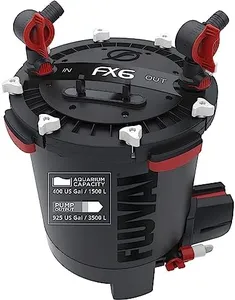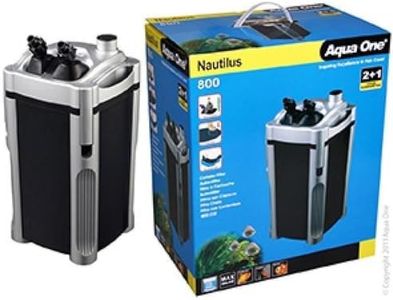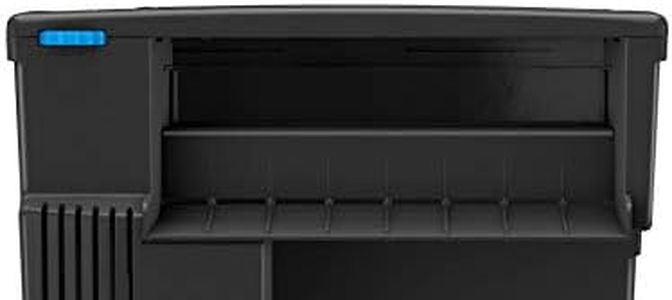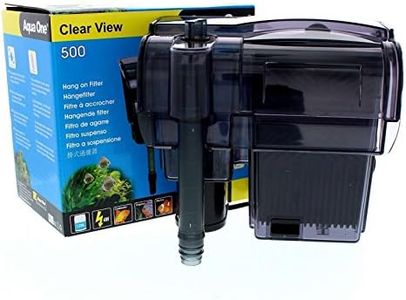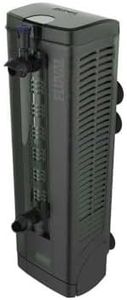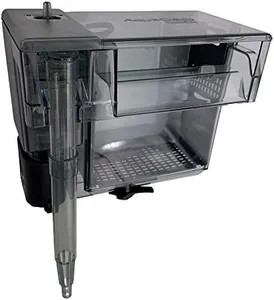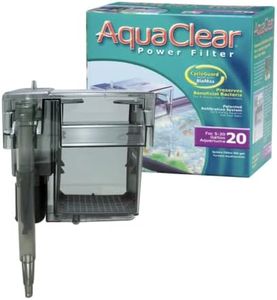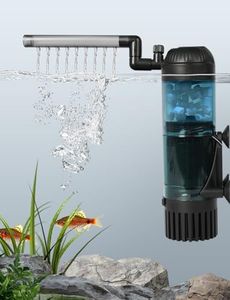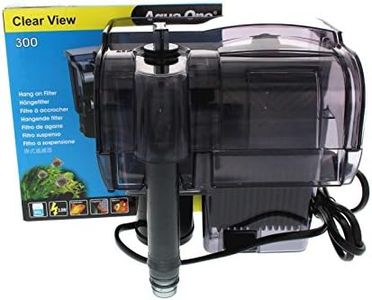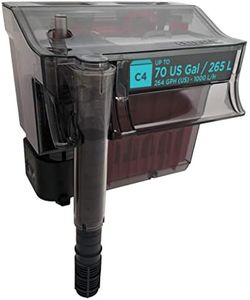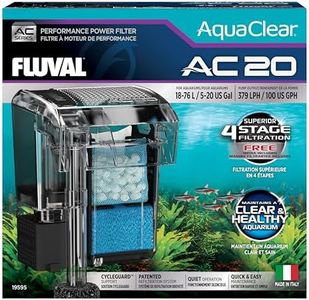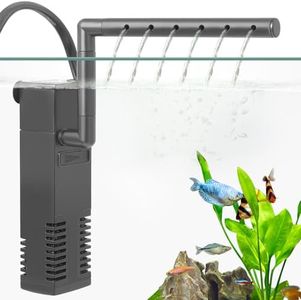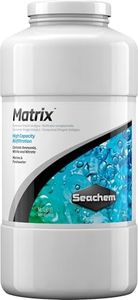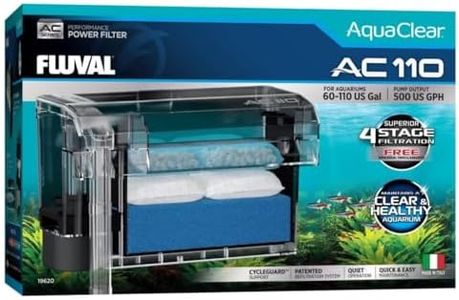We Use CookiesWe use cookies to enhance the security, performance,
functionality and for analytical and promotional activities. By continuing to browse this site you
are agreeing to our privacy policy
10 Best Fish Tank Filters
From leading brands and best sellers available on the web.By clicking on a link to a third party's website, log data is shared with that third party.
Buying Guide for the Best Fish Tank Filters
Choosing the right fish tank filter is crucial for keeping your aquarium water clean and your fish healthy. Filters remove debris, excess food, and harmful substances, creating a stable environment for aquatic life. When selecting a filter, consider the size of your tank, the types of fish you keep, and how much maintenance you’re willing to do. Understanding the main features can help you find the best fit for your needs.Filtration TypeFiltration type refers to the method by which the filter cleans the water, typically categorized as mechanical, chemical, and biological filtration. Mechanical filtration removes physical debris from the water, chemical filtration removes dissolved waste with substances like activated carbon, and biological filtration uses beneficial bacteria to break down toxic ammonia and nitrites. Most good filters provide all three types. If you have a densely stocked tank or sensitive fish, a filter offering all filtration methods is a wise choice. If your tank is sparsely populated or temporary, you might get by with primarily mechanical filtration.
Flow RateFlow rate, usually measured in gallons or liters per hour (GPH or LPH), indicates how much water the filter can process per hour. It’s important because the water in your tank needs to circulate enough to remain healthy but not so strongly that it stresses the fish. For most tanks, aim for a flow rate that circulates the entire volume of your aquarium 3 to 5 times per hour. For example, a 20-gallon tank does well with a filter rated for 60-100 GPH. High flow rates suit tanks with fish that enjoy strong currents, while gentle rates are better for delicate or slow-swimming species.
Filter Size/CapacityFilter size or capacity relates to the maximum aquarium volume for which the filter is designed. Choosing the right size ensures effective filtration and reduces maintenance. Filters designed for tanks much smaller than yours will struggle to keep the water clean, while overly large filters may be noisy or consume more energy. Always pick a filter designed for your tank’s size or slightly above, especially if you have a heavy fish load or messy eaters.
Noise LevelNoise level describes how much sound the filter produces during operation. This can be important if your tank is in a quiet room or bedroom. Filters vary in noise output, with some models offering near-silent operation and others producing noticeable hums. If a peaceful environment is a priority, look for filters described as quiet or silent, but remember that powerful filters may make more noise.
Ease of MaintenanceEase of maintenance refers to how simple it is to clean and replace the filter’s components. A filter that’s easy to open and clean saves time and reduces the chances of skipping maintenance. Consider filters that allow quick access to filter media and have straightforward instructions. Choose based on your willingness and schedule for regular upkeep – busy people benefit from models that need less frequent cleaning.
Installation TypeInstallation type refers to how the filter attaches to your aquarium, commonly as internal, hang-on-back, canister, or sponge models. Internal and sponge filters are placed inside the tank and are often great for small tanks or breeding setups. Hang-on-back filters hang on the rear of the tank and are easy to install and maintain, making them popular for many setups. Canister filters usually sit outside the tank and offer strong cleaning for larger tanks but may require more setup. Pick the type that matches your tank’s size, space availability around the aquarium, and your comfort with set-up steps.
Filter Media OptionsFilter media options refer to what types of filter materials the system can use, like sponges, ceramic rings, or carbon. Some filters come with replaceable cartridges, while others allow you to mix and match media for custom filtration. If you desire flexibility to address specific water quality issues or want to reduce long-term costs by changing only certain media, pick a filter with customizable media compartments.
